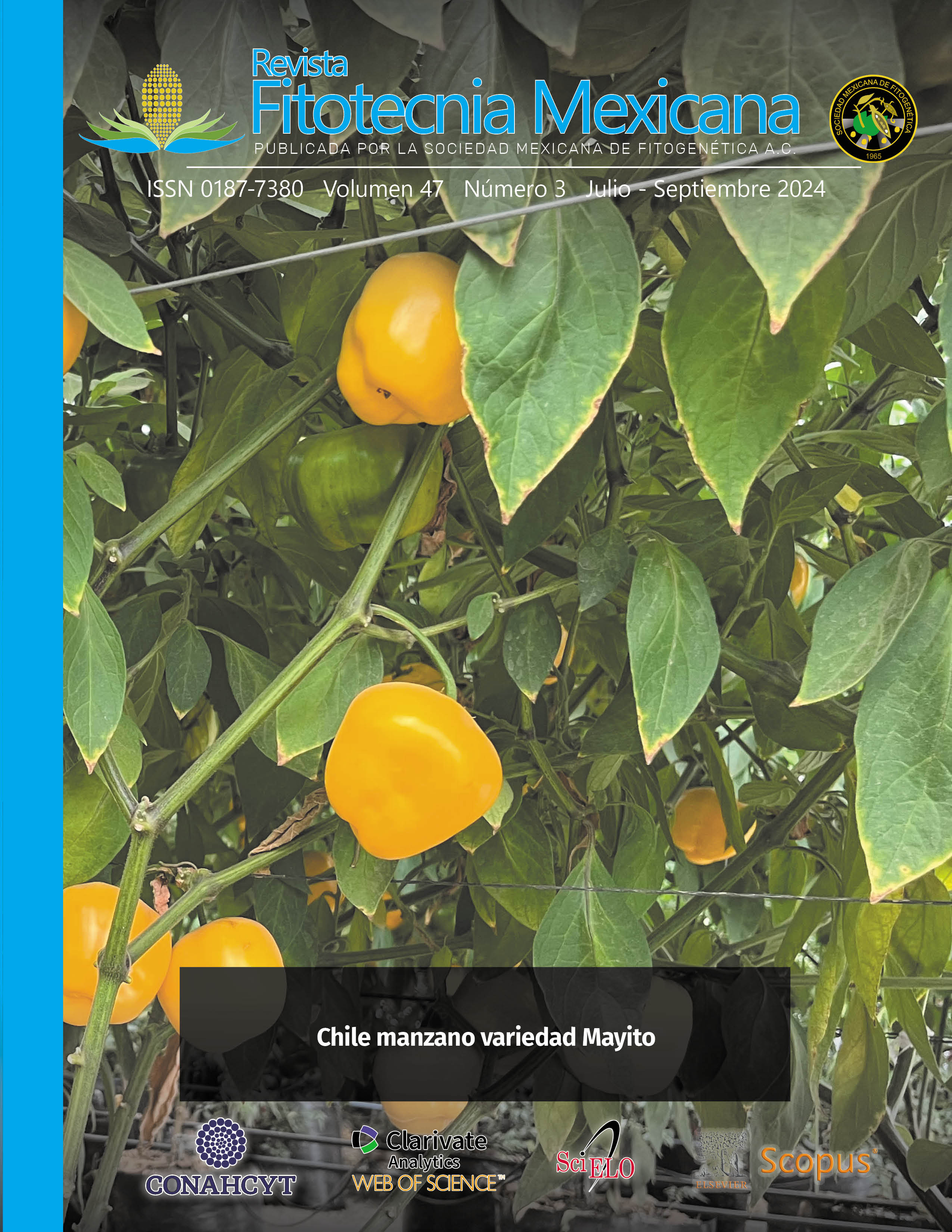SURVIVAL AND GENETIC CONTROL ON PHENOTYPIC CHARACTERISTICS IN A Pinus patula PROGENY TEST
Main Article Content
Abstract
Evaluation of parents of trees with commercial potential is essential for its massive propagation. The aim of this study was to evaluate field survival and genetic control on height and diameter at the root neck at 8, 10 and 12 months of age in a progeny-provenance test of Pinus patula in Durango, Mexico. Forty-two families from seven provenances of the states of Puebla (Ahuazotepec, Zacatlán and Aquixtla), Hidalgo (Zacualtipán and Acaxochitlán), Querétaro (Pinal de Amoles) and Veracruz (Huayacocotla), Mexico were evaluated. A randomized complete block design with 15 repetitions was used. Analysis of variance was performed and individual heritability (h2i) and phenotypic (rpf), and genetic (rg) correlations between characteristics were estimated, which were correlated with geographic and climatic variables of the sites of provenance. Differences were found (P ≤ 0.05) in survival, height and diameter between provenances and families at the three ages evaluated. The families from Aquixtla had the highest survival rate with 79 % and those from Huayacocotla had the highest values in height (59 cm) and diameter (9.5 mm) at 12 months after planting. Genetic control was moderate for height (0.11 ≤ h2i ≤ 0.23) and diameter (0.20 ≤ h2i ≤ 0.23). Phenotypic and genetic correlations were high and significant (0.43 ≤ rpf ≤ 0.68; 0.65 ≤ rg ≤ 0.87). Height correlated negatively with elevation (r ≥ -0.50) and the drought index (DI) (r ≥ -0.33), and positively with average annual precipitation (AAP) (r ≤ 0.69) and minimum temperature (r ≤ 0.69) of the provenance sites. Survival correlated negatively with AAP (r ≥ -0.45) and positively with DI (r ≤ 0.45). Although plants from sites with higher elevation and lower precipitation showed the lowest growth, they had the highest survival rate, which could favor their adaptability.

